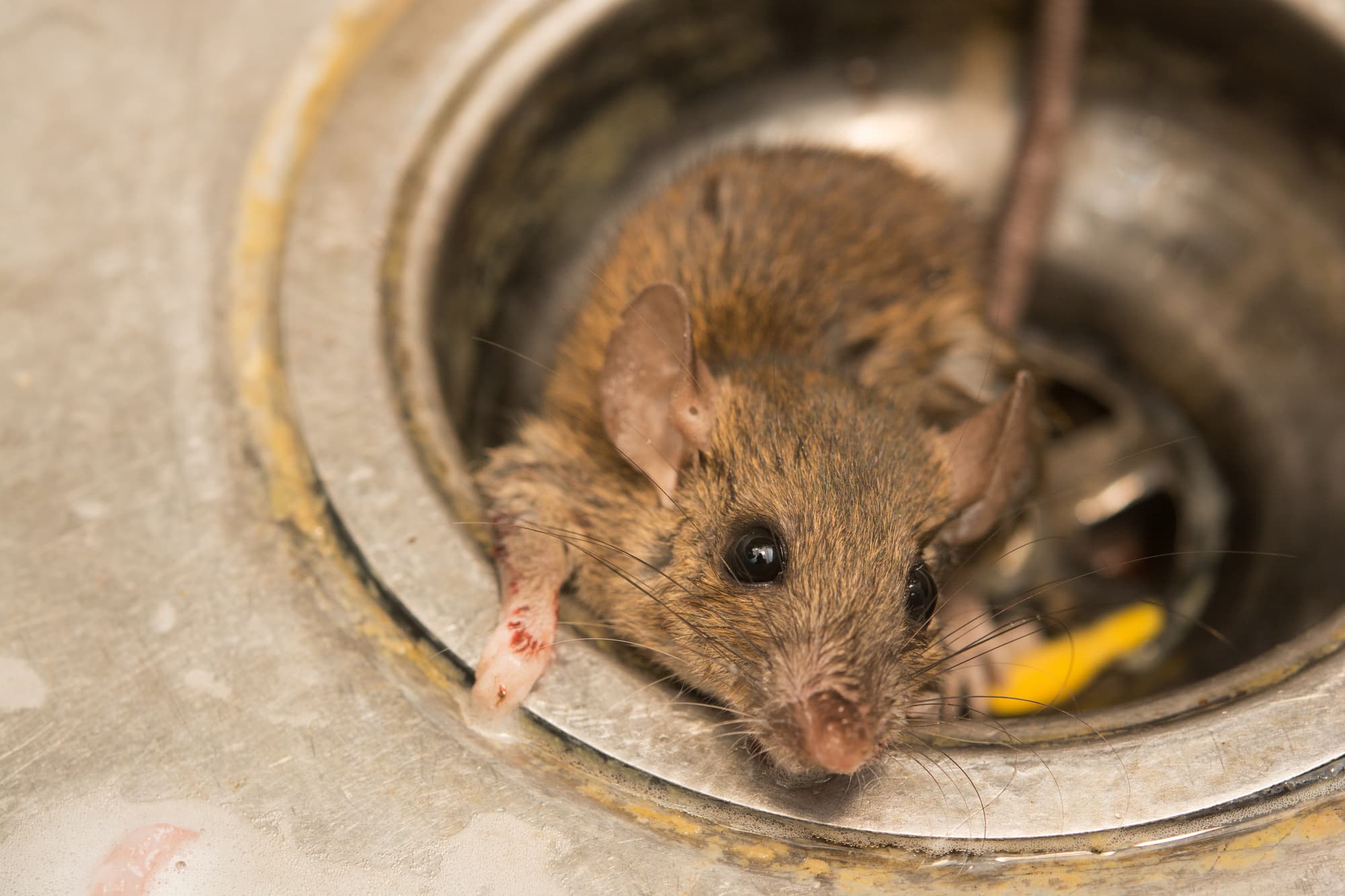What’s worse than finding a dead roach in your home or office? Finding a dead rat. Here's how you can properly dispose of it.

Coming across a dead rat is a disgusting and horrifying sight. Hopefully, you never have to experience it firsthand. However, if you do, it’s important to know how to handle the situation.
What Types of Rats Are You Likely to Come Across?
There are three types of rats most commonly found in homes or office buildings:
1. Norway rat
This rodent is known by numerous names, including street rat, sewer rat, brown rat and wharf rat. The Norway rat can grow up to 10 inches long and weighs in at close to a pound. Norway rats tend to make their homes wherever humans live and often prefer urban areas.
2. Pack rat
These types of rats come by their names honestly, as they love to snag shiny objects and take them back to their nests. Sometimes they even drop the food they’re carrying to take a treasure, which is why they’re also called trade rats. Pack rats are about eight inches long (not including their tails) and range in color from cinnamon or brown to gray or buff.
3. Roof rat
Also known as a black rat, roof rats can grow to 10 to 12 inches in body length (add another 10 inches for the tail) and can weigh up to 1 pound. In addition to being black, they also come in shades of brown and gray. You may be more likely to encounter roof rats in fall and winter, when their natural outdoor food sources run dry.
Dead Rat Removal 101
These different types of rats and other rodents can transmit numerous diseases, both directly and indirectly, according to the Centers for Disease Control and Prevention (CDC). Getting rid of a rat carcass could put you at risk of becoming ill, so it is best to contact a rodent control professional to handle these situations. However, if you insist on doing it yourself, here’s how to properly dispose of a dead rat.
You’ll need the following according to the CDC:
- Protective gloves and clothing
- A respirator or dust filter mask
- A plastic bag
- A trash bag
After donning your mask and protective gear, place the rat into the plastic bag and seal it. Then, place that bag into a separate trash bag and tie the trash bag tightly. This may seem like overkill, but it’s better to be safe than sorry. You may be able to throw the rat into your outdoor trash bin. However, some cities have strict rules for disposing of dead animals. Therefore, it’s a good idea to call a pest control company or your city’s public animal control service to be sure it’s OK to put a rat in a dumpster or out for curbside pickup.
That being said, rats aren’t always considerate enough to expire in open areas where you’ll be able to easily spot them. Sometimes, you’re more likely to notice the smell of a rat decaying in your attic, or, worse yet, your walls or air vents. If that’s the case, your best bet is to call a rodent control specialist who will be better able to locate the source of the smell — and remove it.
Next Steps After Dead Rat Removal
Rats are social creatures, which means that if you find one dead rat, there are likely more living rats somewhere nearby. To help avoid coming across another rat, be it dead or alive, you’ll need to take the following preventative measures:
- Keep up with building repair and maintenance to eliminate entry points.
- Trim tree branches so that they don’t touch your home or building, giving rats a means of climbing indoors.
- Block rain gutters with wire or mesh so rats can’t climb up them.
- Deter rat tunneling by laying stones or a patio around your home and by keeping yards neatly mowed.
- Invest in a heavy-duty outdoor trash can that rats can’t get into.
- Make sure food preparation and eating areas are properly cleaned and store food in air-tight containers.
- Don’t flush food products or leave them sitting in drains.
Rats are unsanitary and can cause major damage to your home or office, whether they’re dead or not. If you come across a dead rat or think you have an infestation, don’t hesitate to contact a rodent control professional.
Sources:
Center for Disease Control and Prevention



